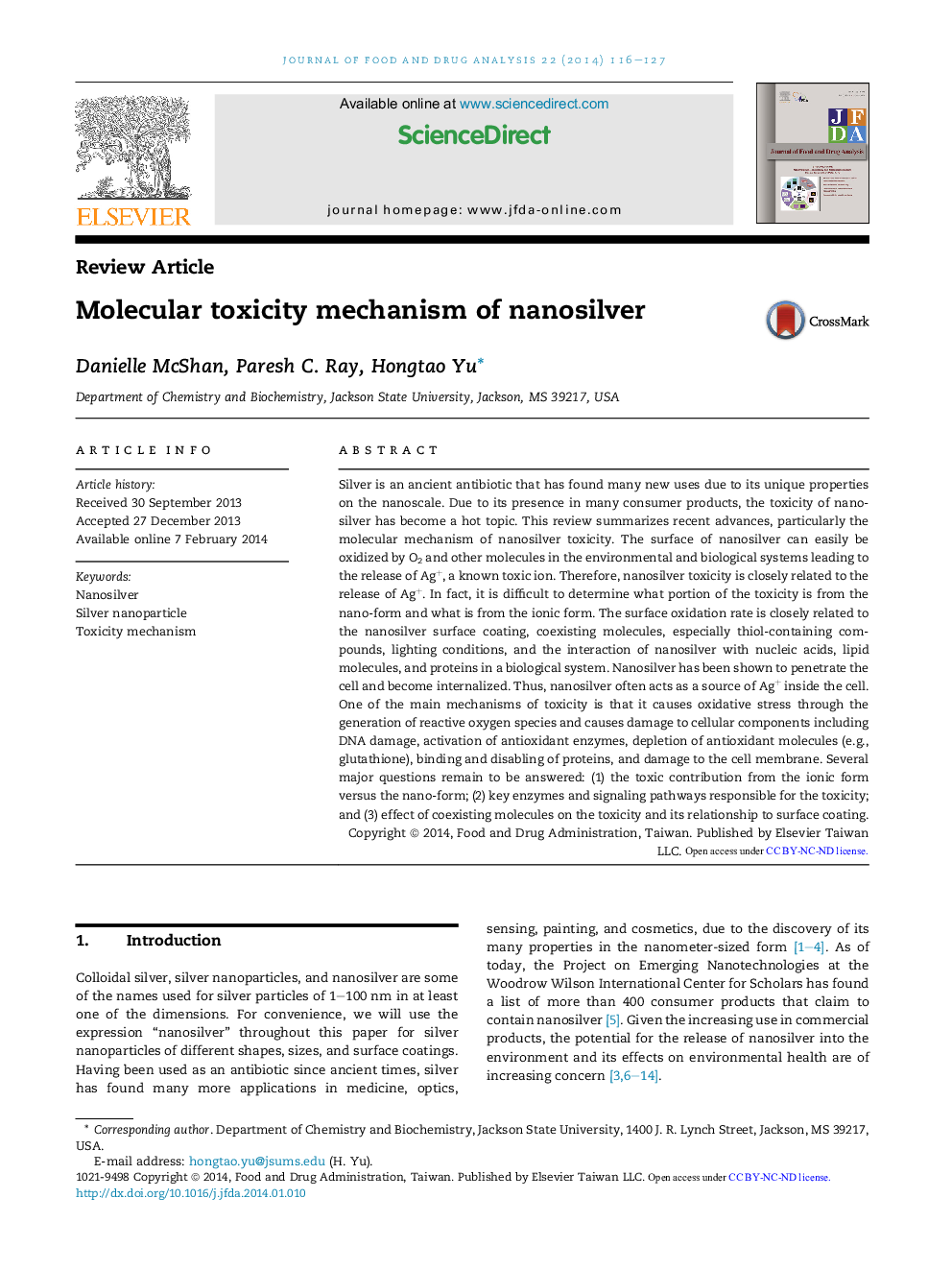| کد مقاله | کد نشریه | سال انتشار | مقاله انگلیسی | نسخه تمام متن |
|---|---|---|---|---|
| 2507520 | 1117491 | 2014 | 12 صفحه PDF | دانلود رایگان |
Silver is an ancient antibiotic that has found many new uses due to its unique properties on the nanoscale. Due to its presence in many consumer products, the toxicity of nanosilver has become a hot topic. This review summarizes recent advances, particularly the molecular mechanism of nanosilver toxicity. The surface of nanosilver can easily be oxidized by O2 and other molecules in the environmental and biological systems leading to the release of Ag+, a known toxic ion. Therefore, nanosilver toxicity is closely related to the release of Ag+. In fact, it is difficult to determine what portion of the toxicity is from the nano-form and what is from the ionic form. The surface oxidation rate is closely related to the nanosilver surface coating, coexisting molecules, especially thiol-containing compounds, lighting conditions, and the interaction of nanosilver with nucleic acids, lipid molecules, and proteins in a biological system. Nanosilver has been shown to penetrate the cell and become internalized. Thus, nanosilver often acts as a source of Ag+ inside the cell. One of the main mechanisms of toxicity is that it causes oxidative stress through the generation of reactive oxygen species and causes damage to cellular components including DNA damage, activation of antioxidant enzymes, depletion of antioxidant molecules (e.g., glutathione), binding and disabling of proteins, and damage to the cell membrane. Several major questions remain to be answered: (1) the toxic contribution from the ionic form versus the nano-form; (2) key enzymes and signaling pathways responsible for the toxicity; and (3) effect of coexisting molecules on the toxicity and its relationship to surface coating.
Journal: Journal of Food and Drug Analysis - Volume 22, Issue 1, March 2014, Pages 116–127
